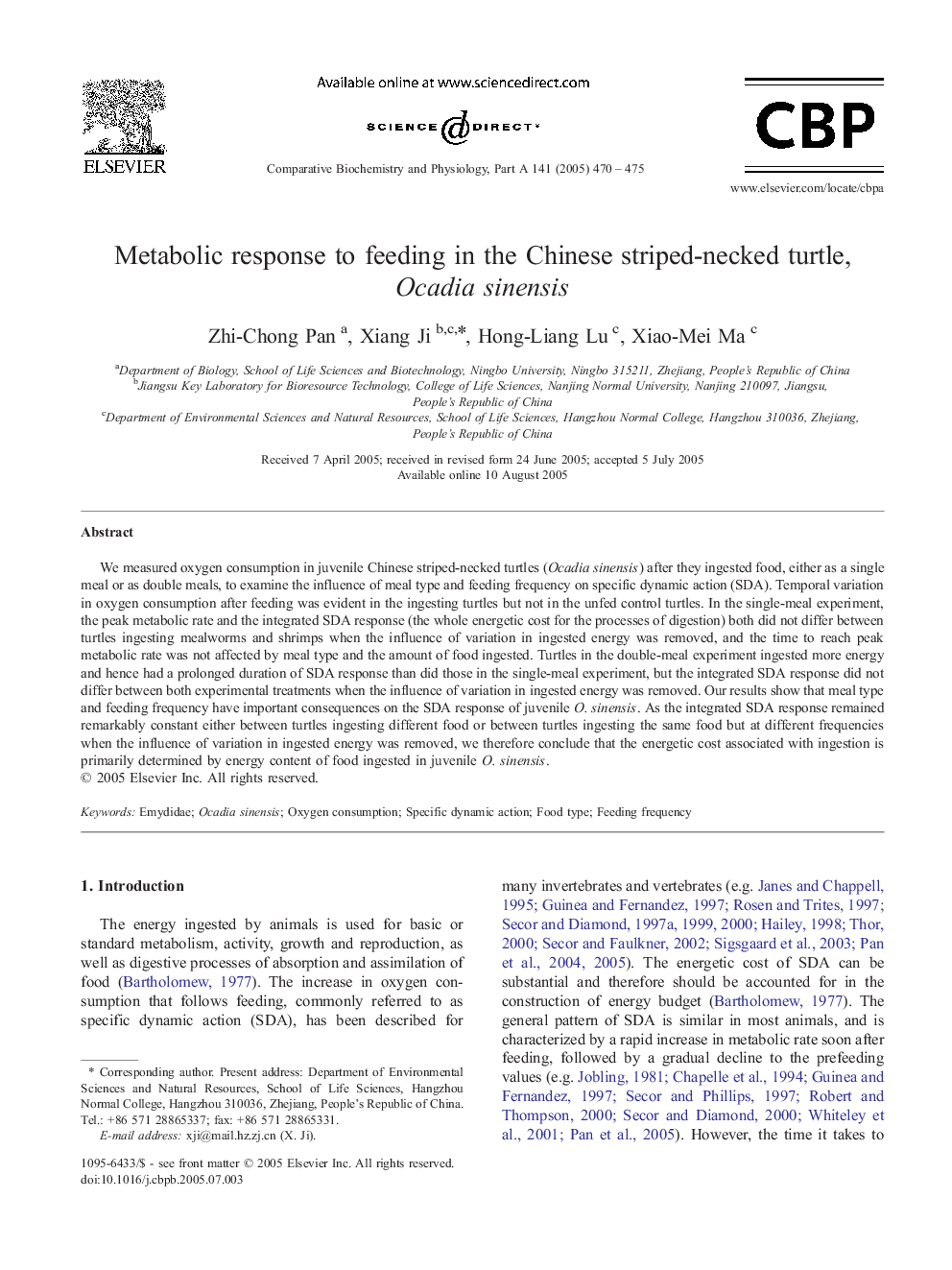| Article ID | Journal | Published Year | Pages | File Type |
|---|---|---|---|---|
| 10819393 | Comparative Biochemistry and Physiology Part A: Molecular & Integrative Physiology | 2005 | 6 Pages |
Abstract
We measured oxygen consumption in juvenile Chinese striped-necked turtles (Ocadia sinensis) after they ingested food, either as a single meal or as double meals, to examine the influence of meal type and feeding frequency on specific dynamic action (SDA). Temporal variation in oxygen consumption after feeding was evident in the ingesting turtles but not in the unfed control turtles. In the single-meal experiment, the peak metabolic rate and the integrated SDA response (the whole energetic cost for the processes of digestion) both did not differ between turtles ingesting mealworms and shrimps when the influence of variation in ingested energy was removed, and the time to reach peak metabolic rate was not affected by meal type and the amount of food ingested. Turtles in the double-meal experiment ingested more energy and hence had a prolonged duration of SDA response than did those in the single-meal experiment, but the integrated SDA response did not differ between both experimental treatments when the influence of variation in ingested energy was removed. Our results show that meal type and feeding frequency have important consequences on the SDA response of juvenile O. sinensis. As the integrated SDA response remained remarkably constant either between turtles ingesting different food or between turtles ingesting the same food but at different frequencies when the influence of variation in ingested energy was removed, we therefore conclude that the energetic cost associated with ingestion is primarily determined by energy content of food ingested in juvenile O. sinensis.
Related Topics
Life Sciences
Biochemistry, Genetics and Molecular Biology
Biochemistry
Authors
Zhi-Chong Pan, Xiang Ji Xiang Ji, Hong-Liang Lu, Xiao-Mei Ma,
